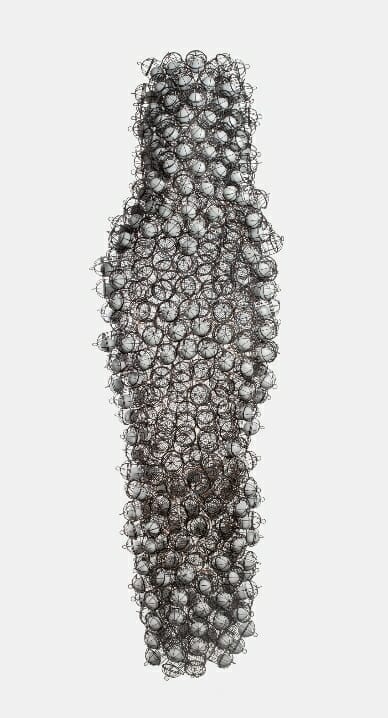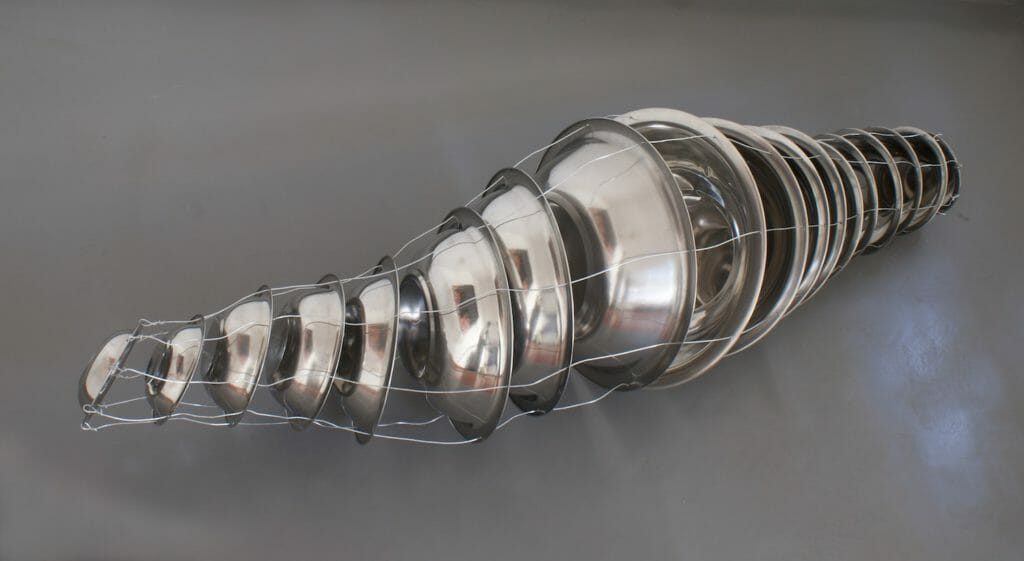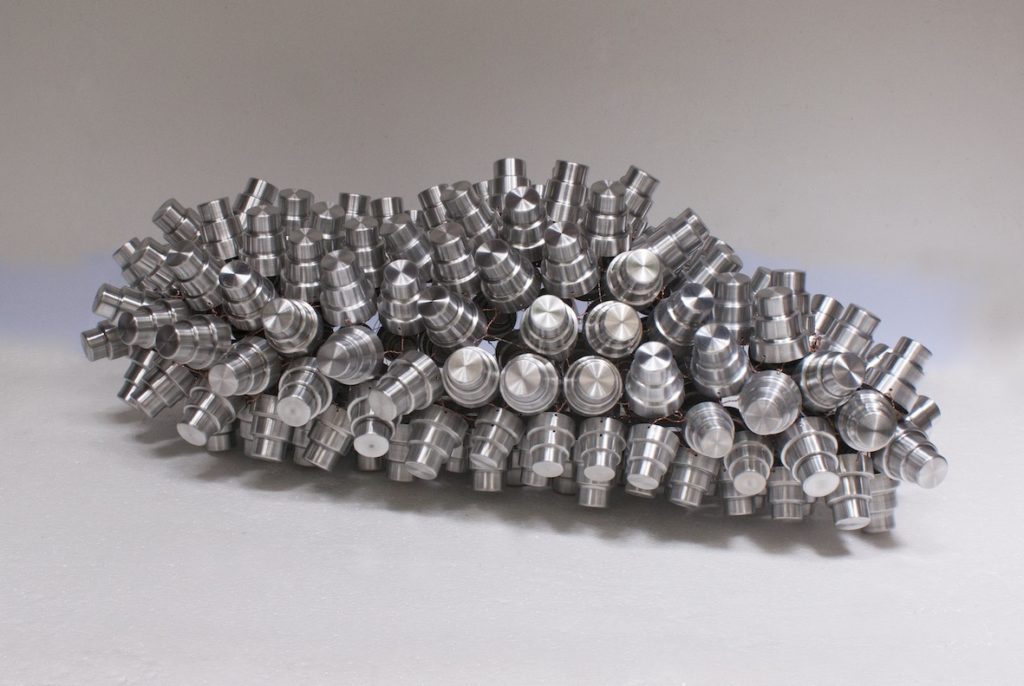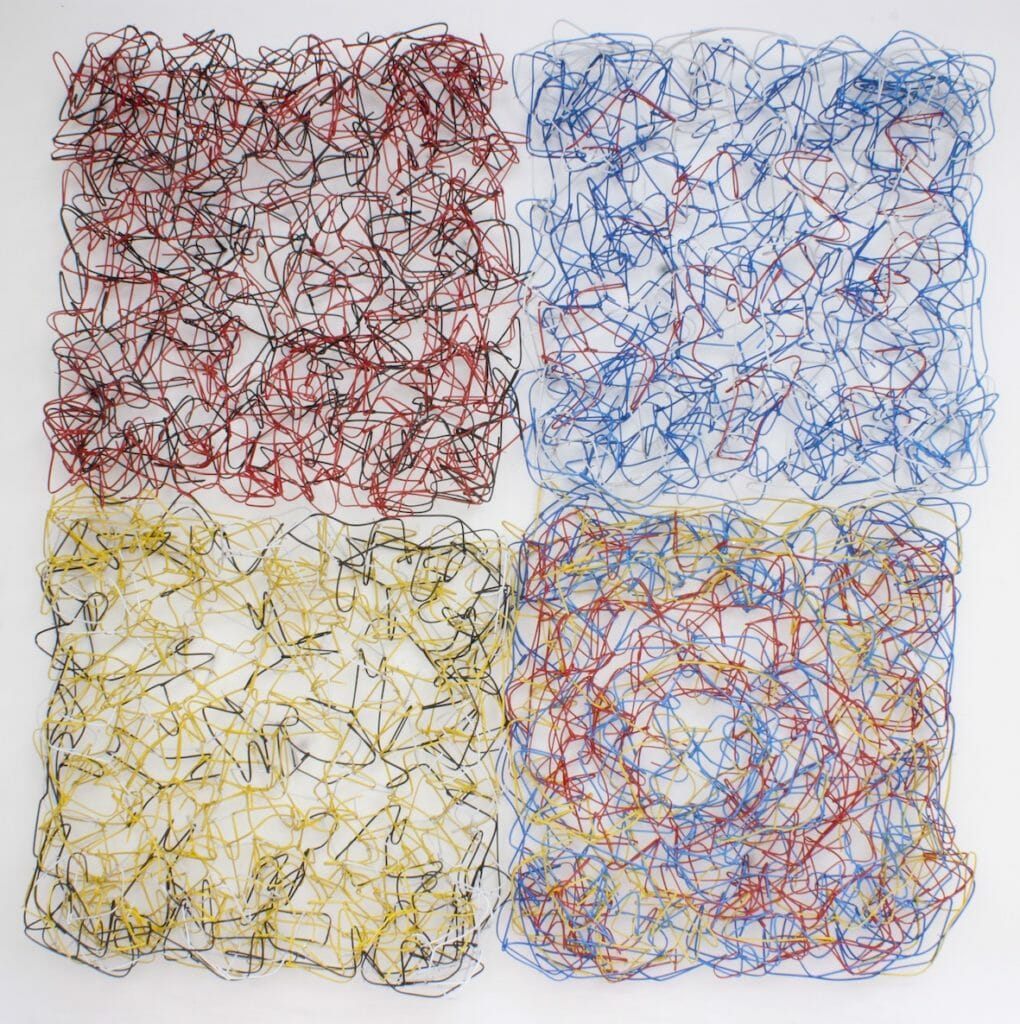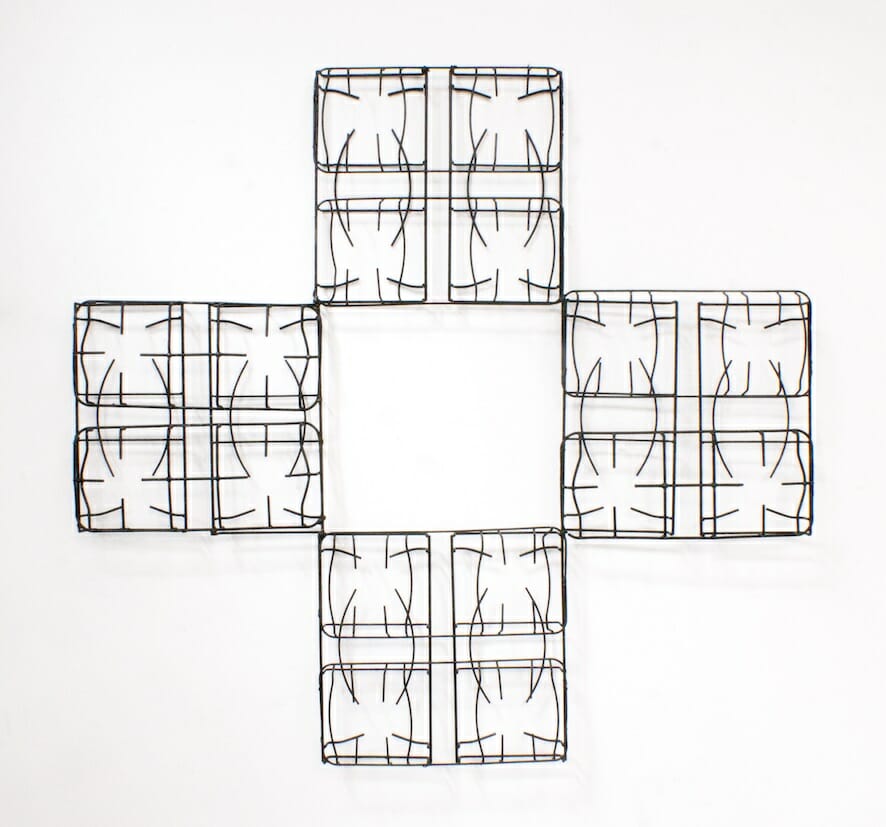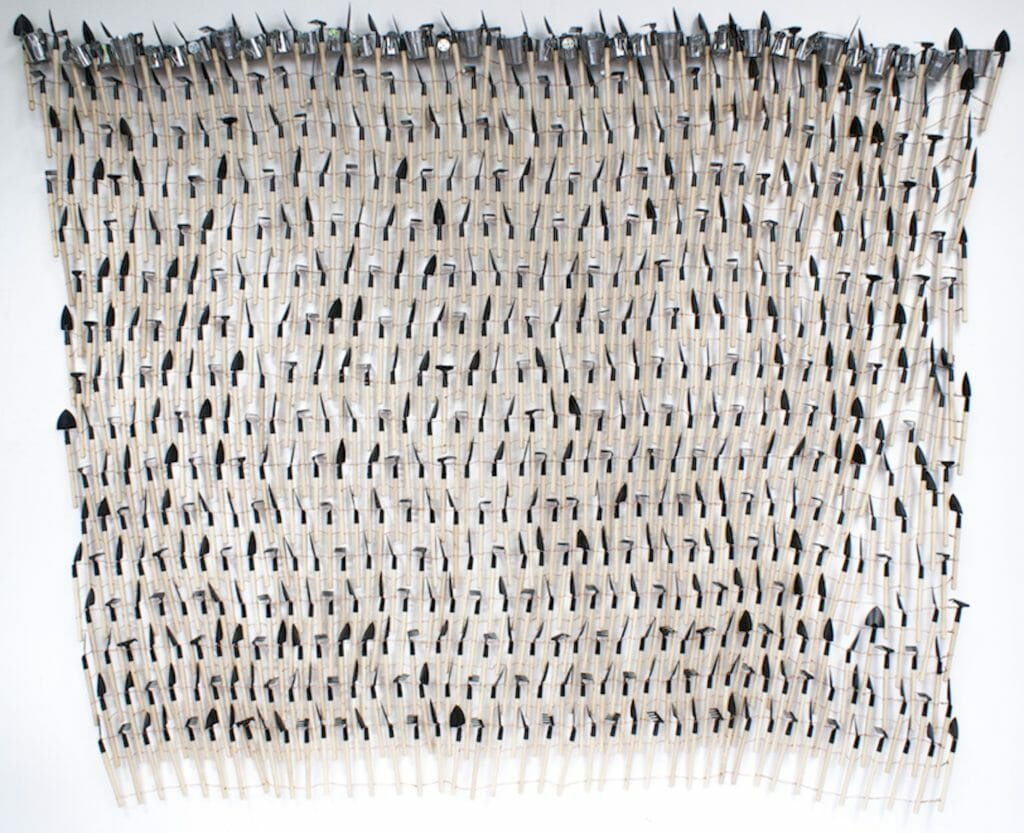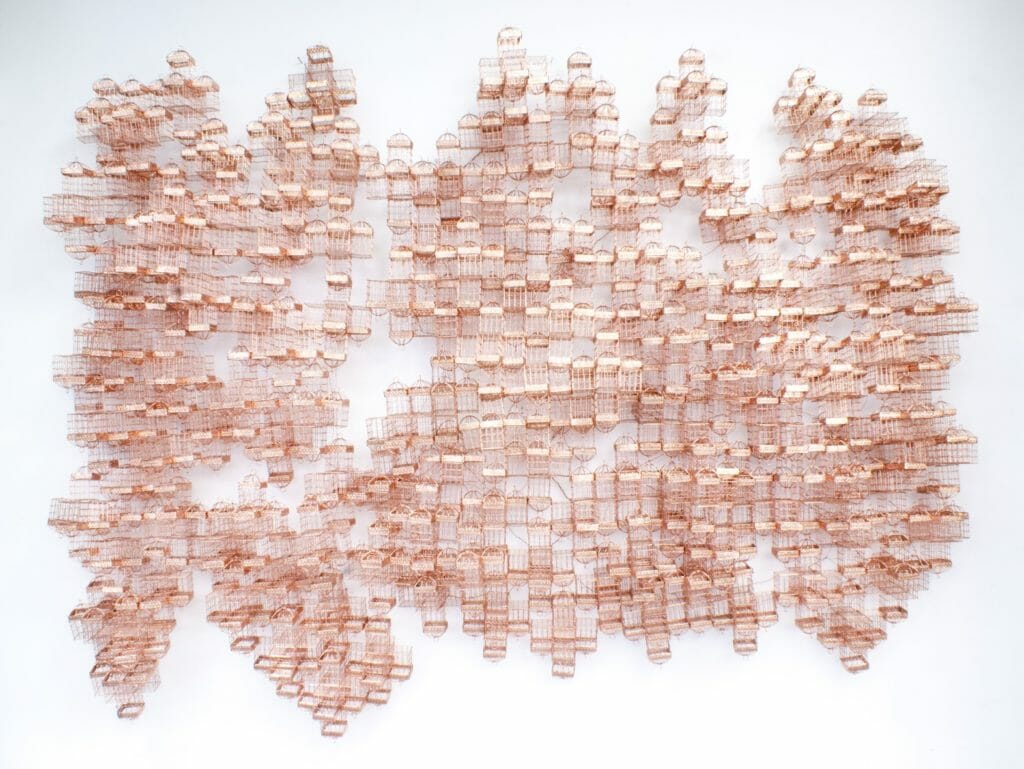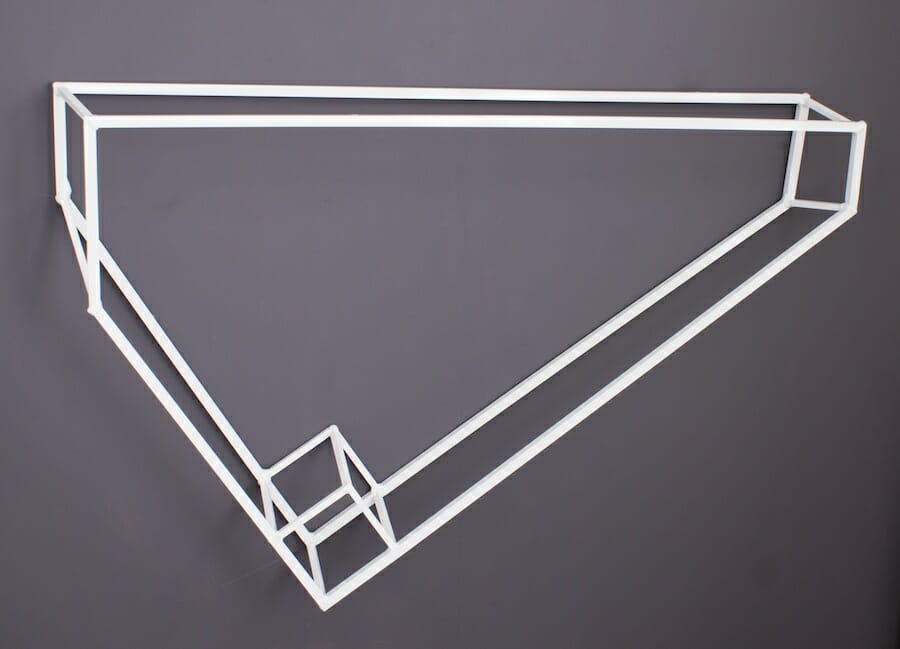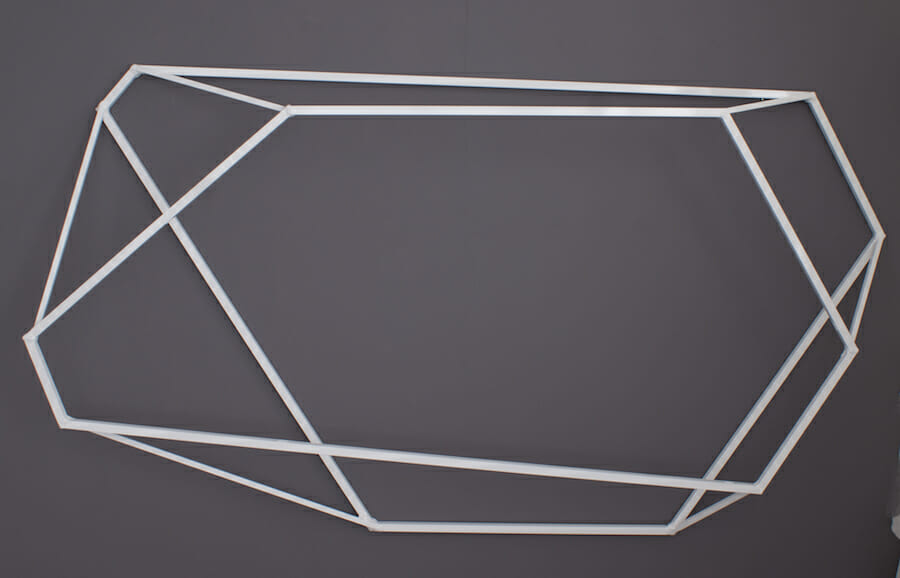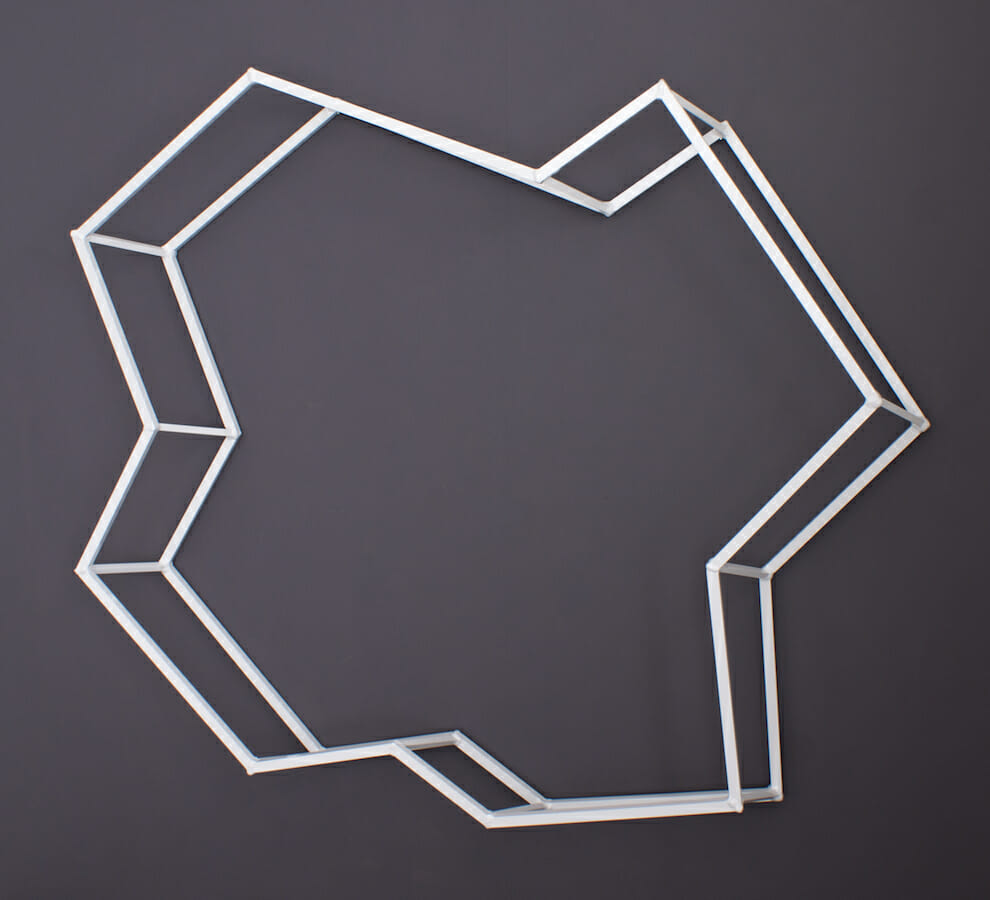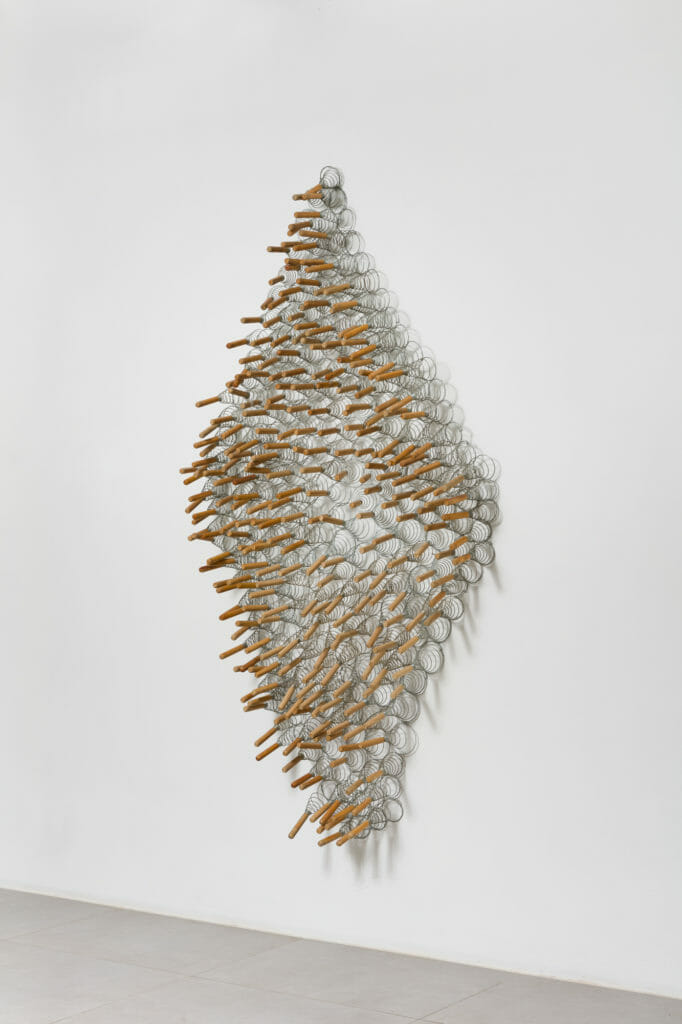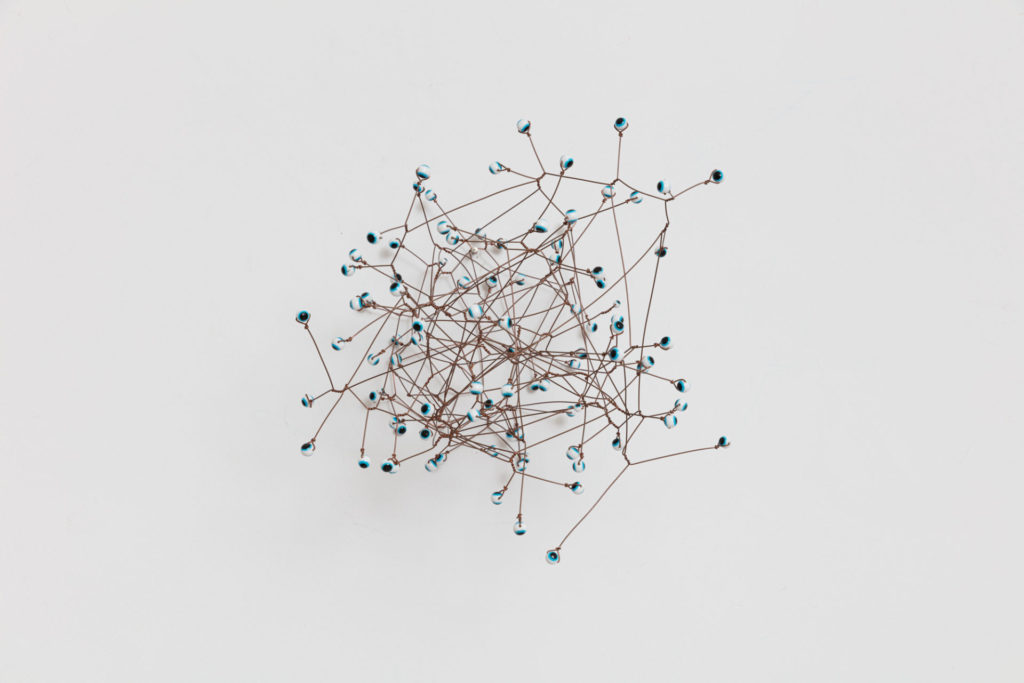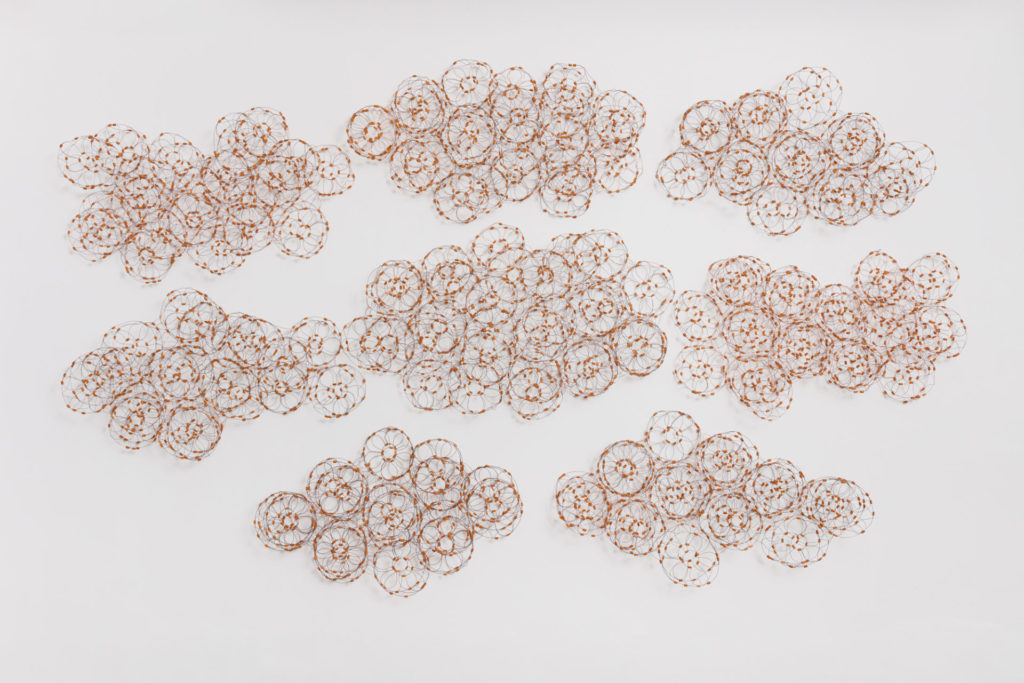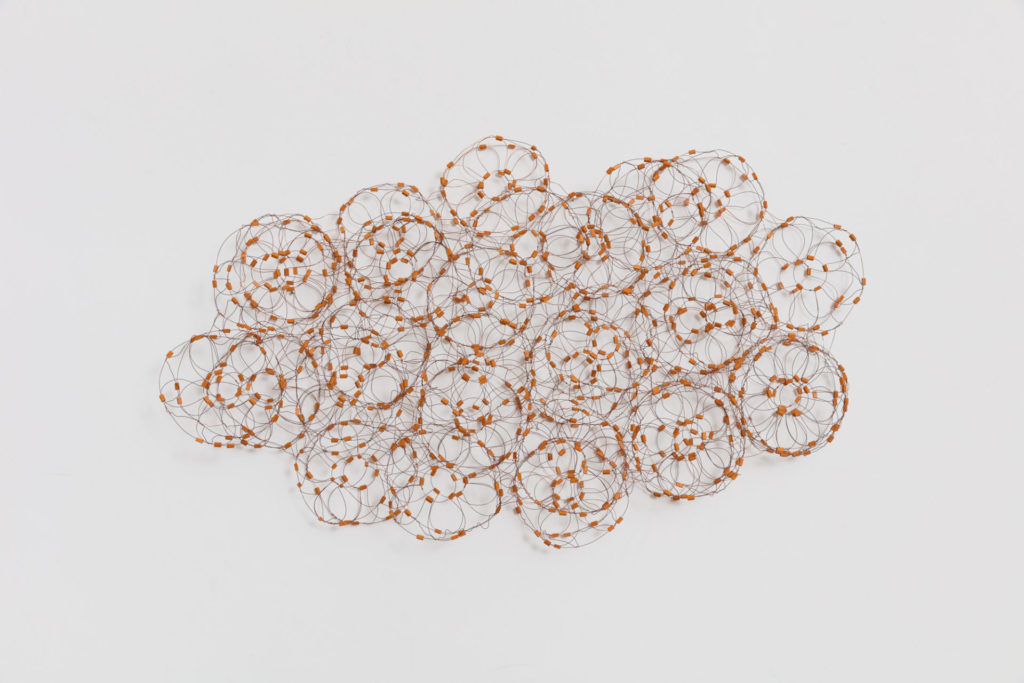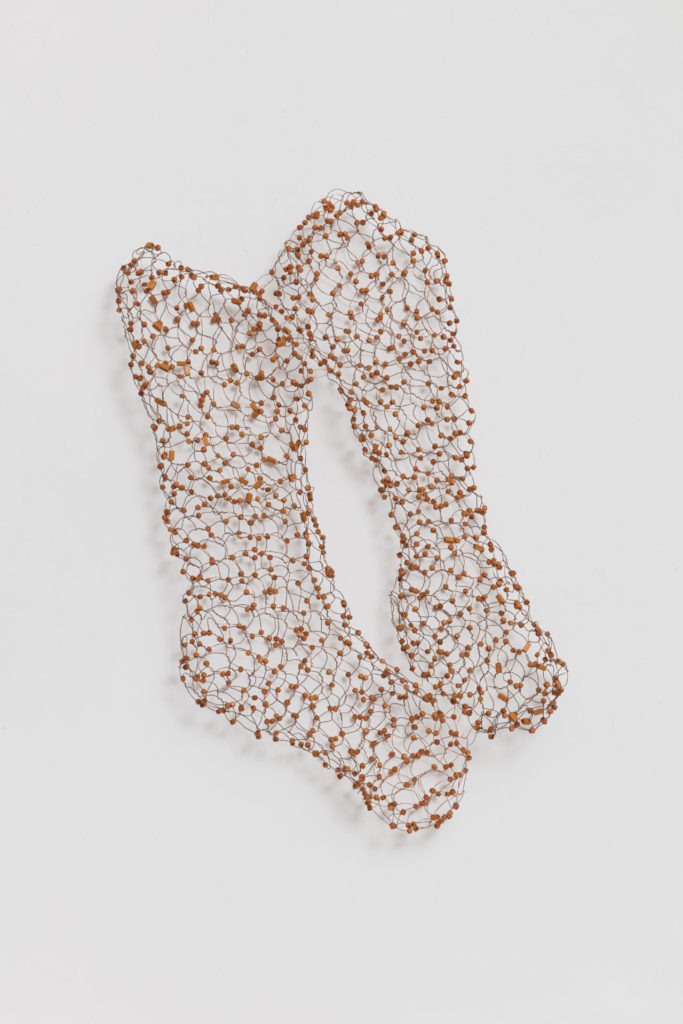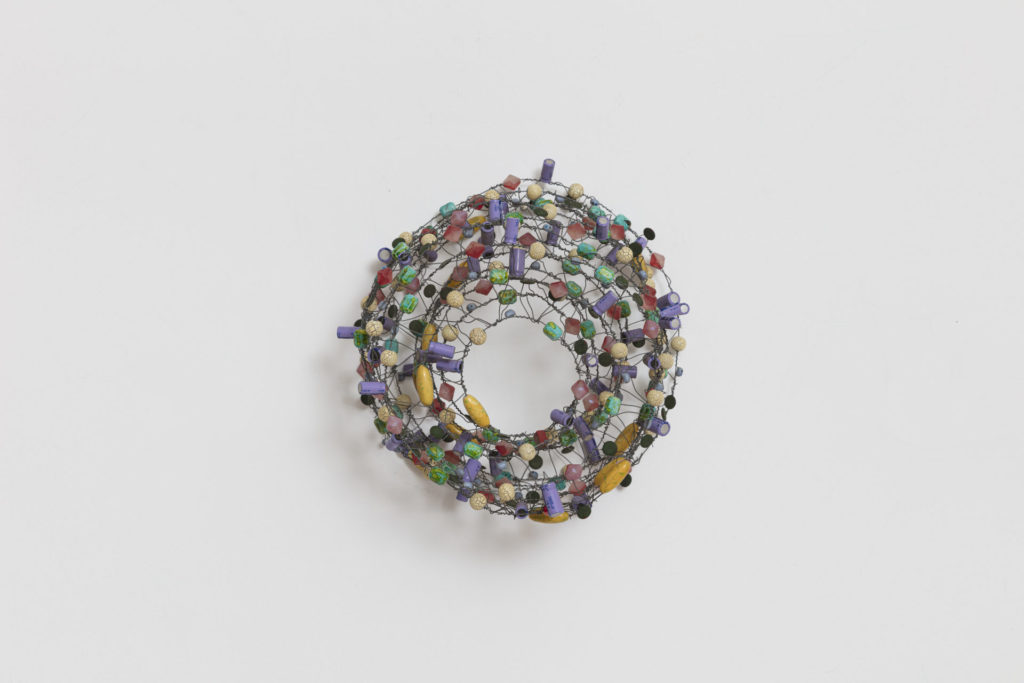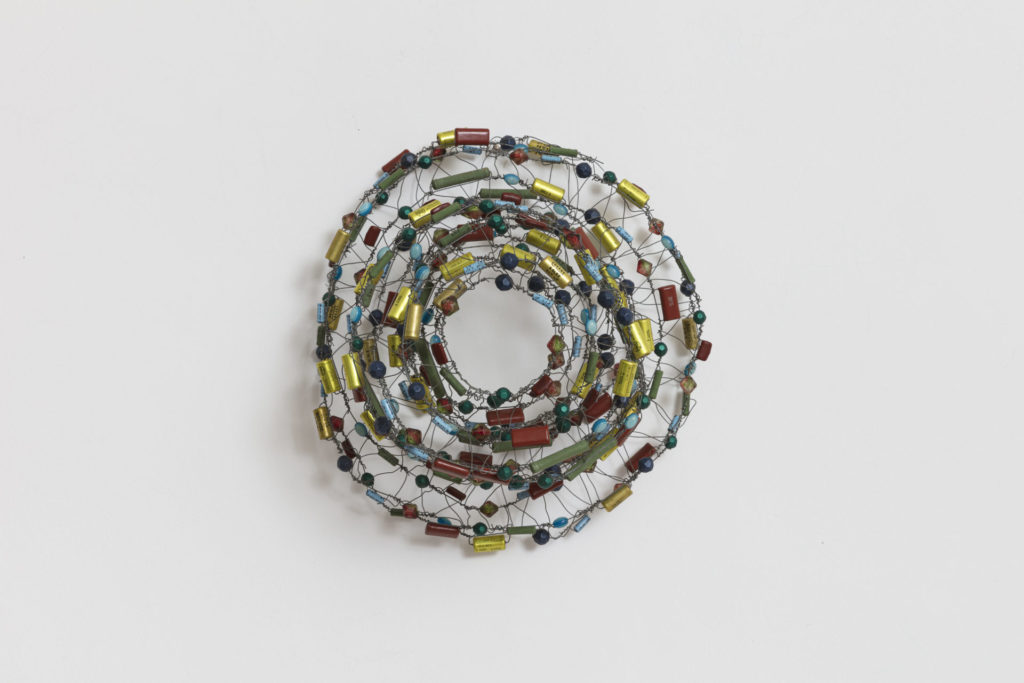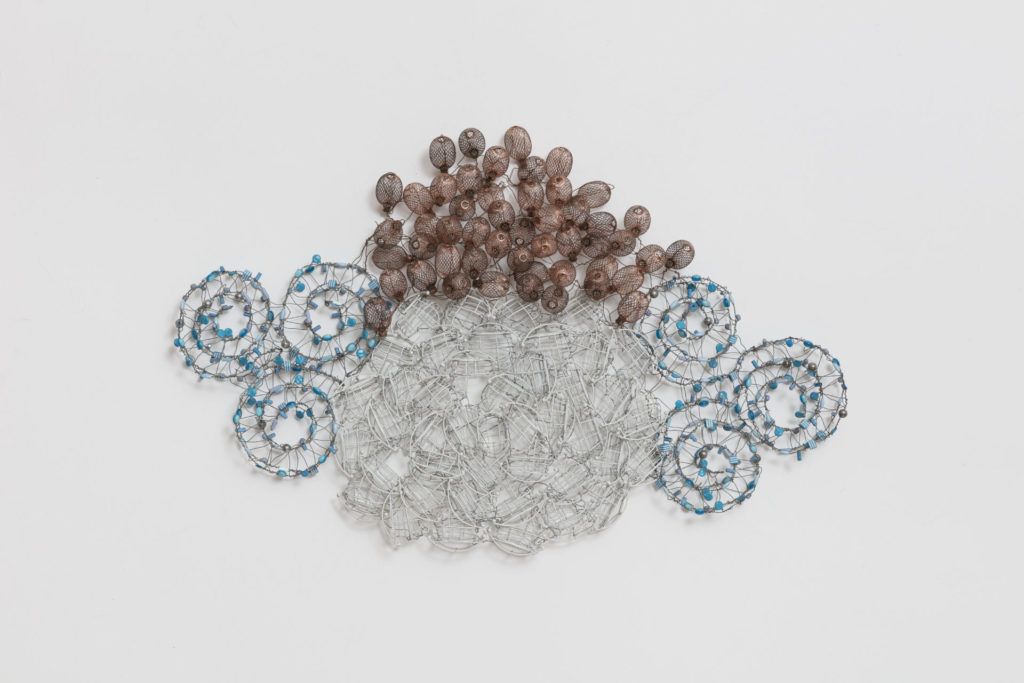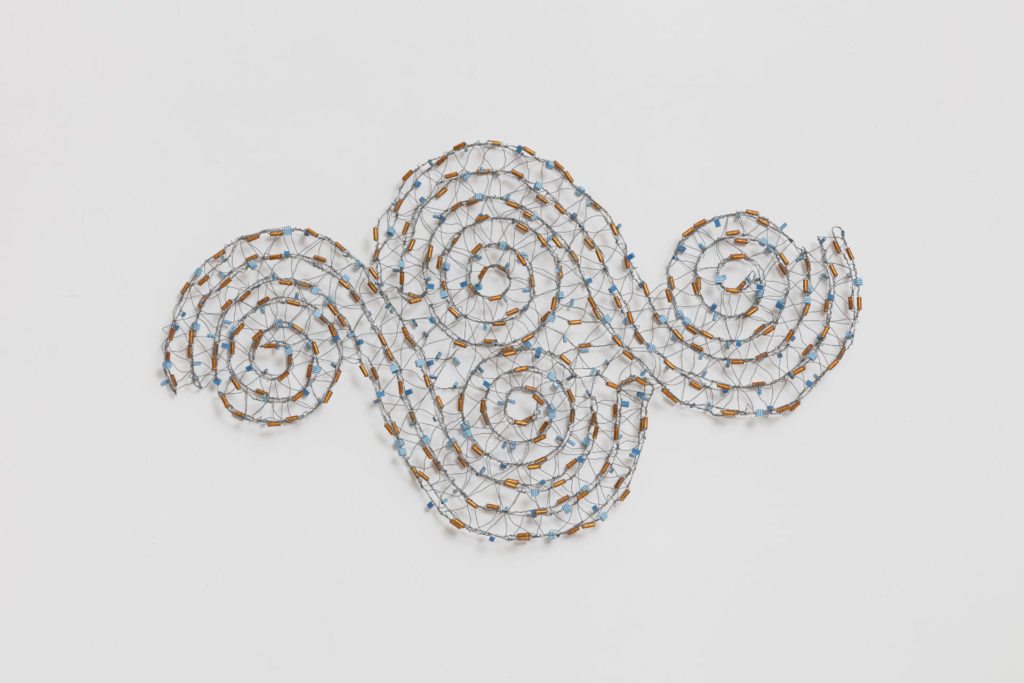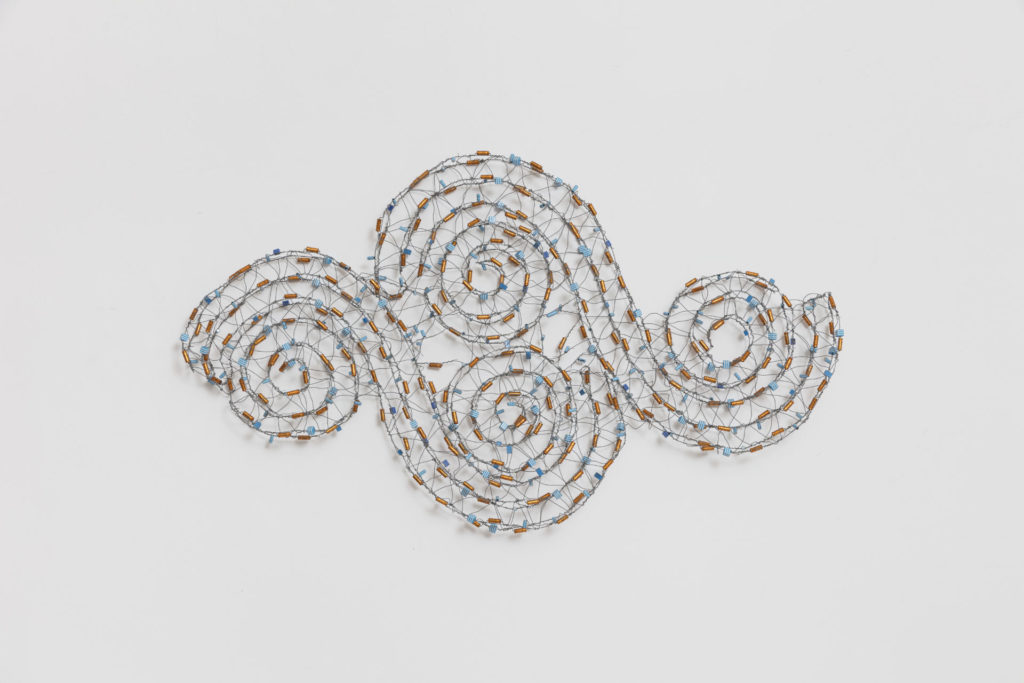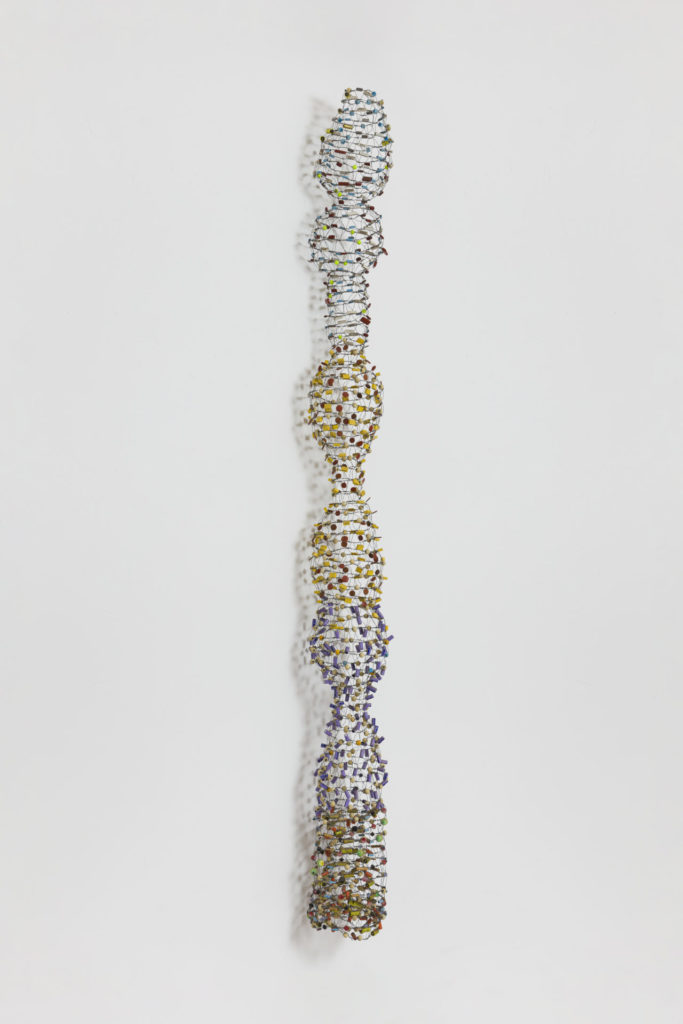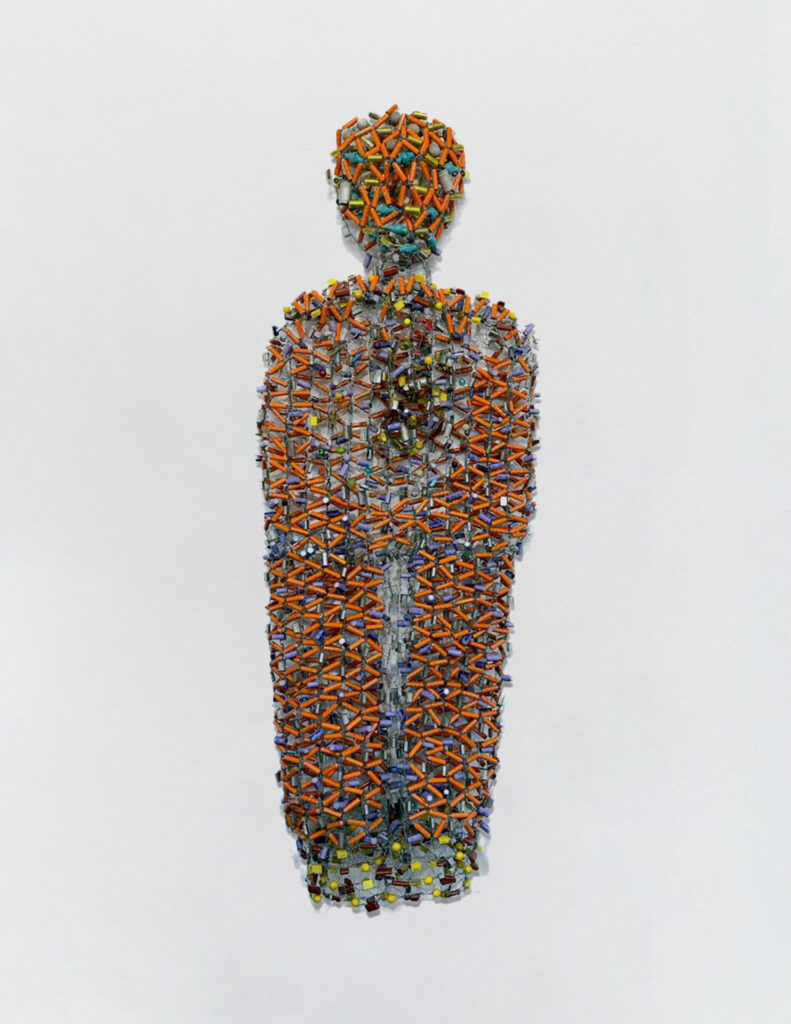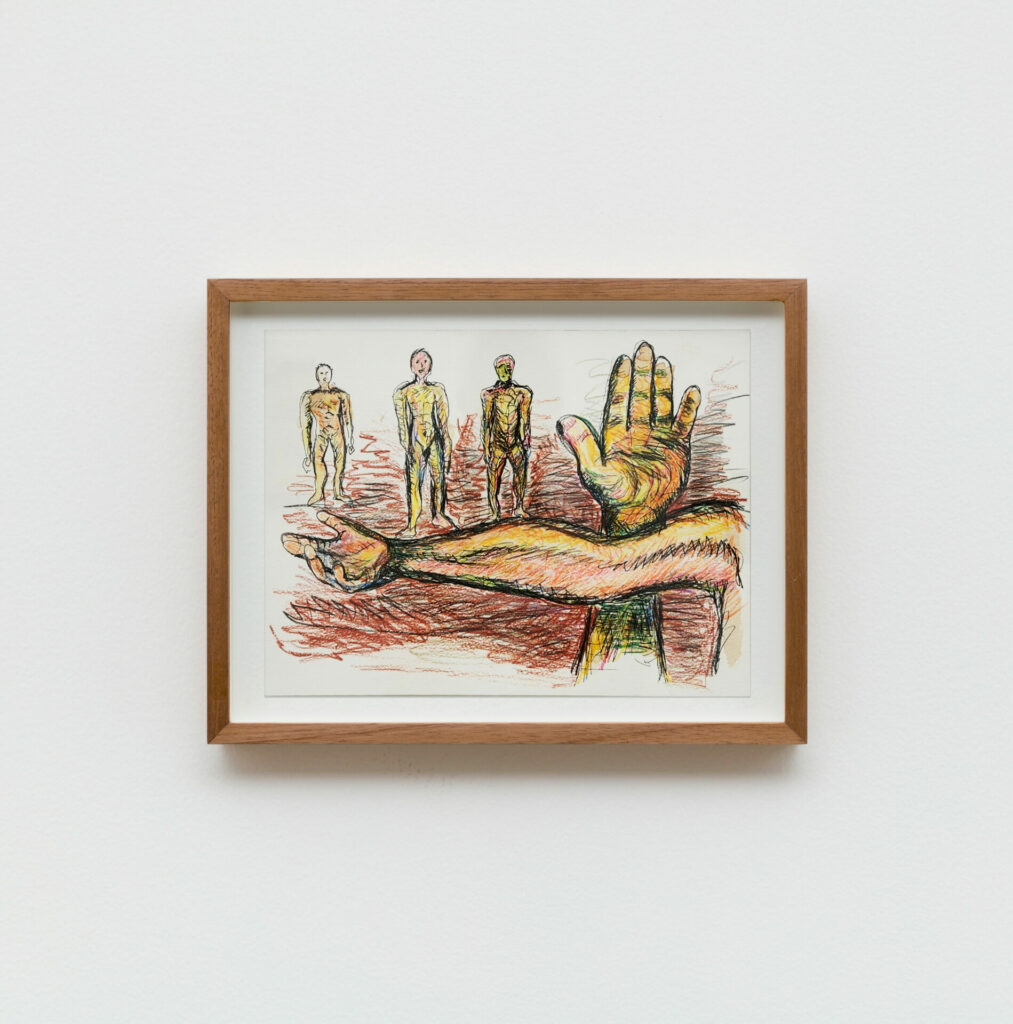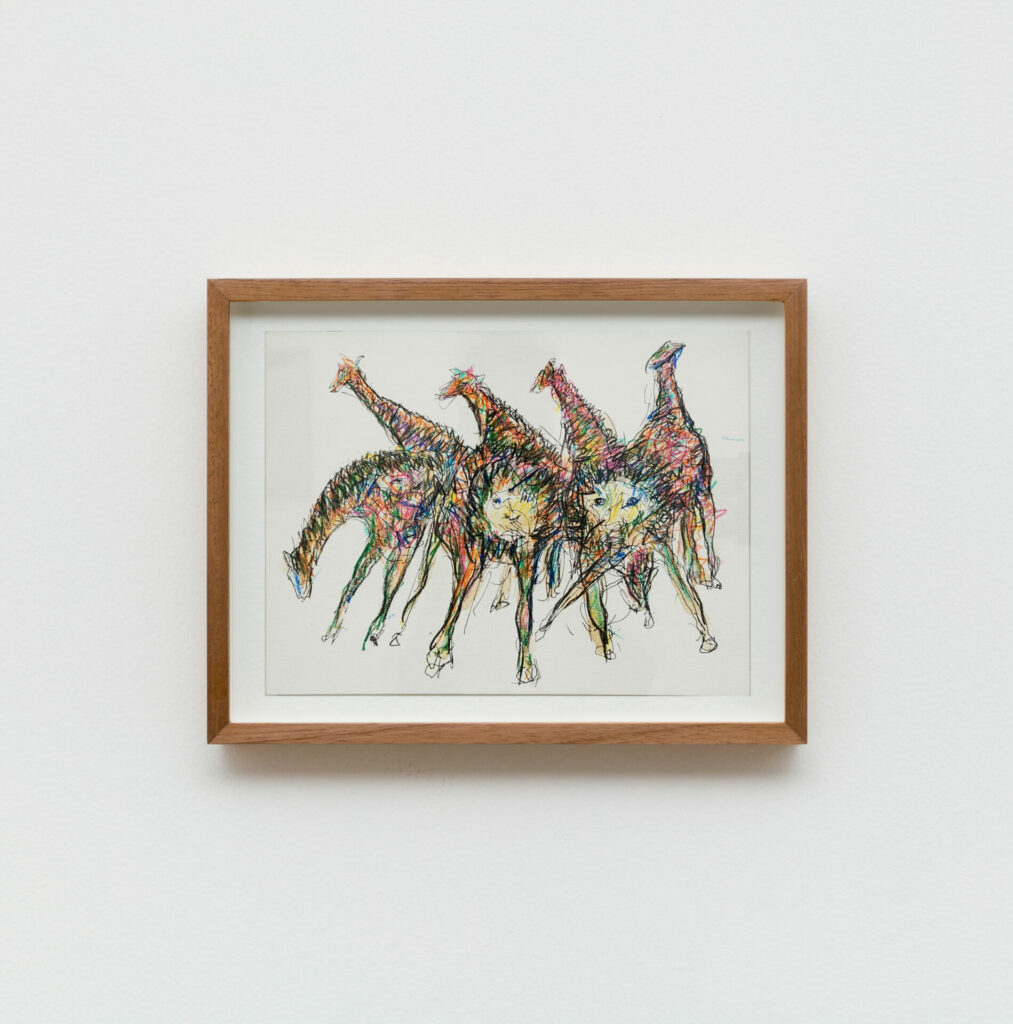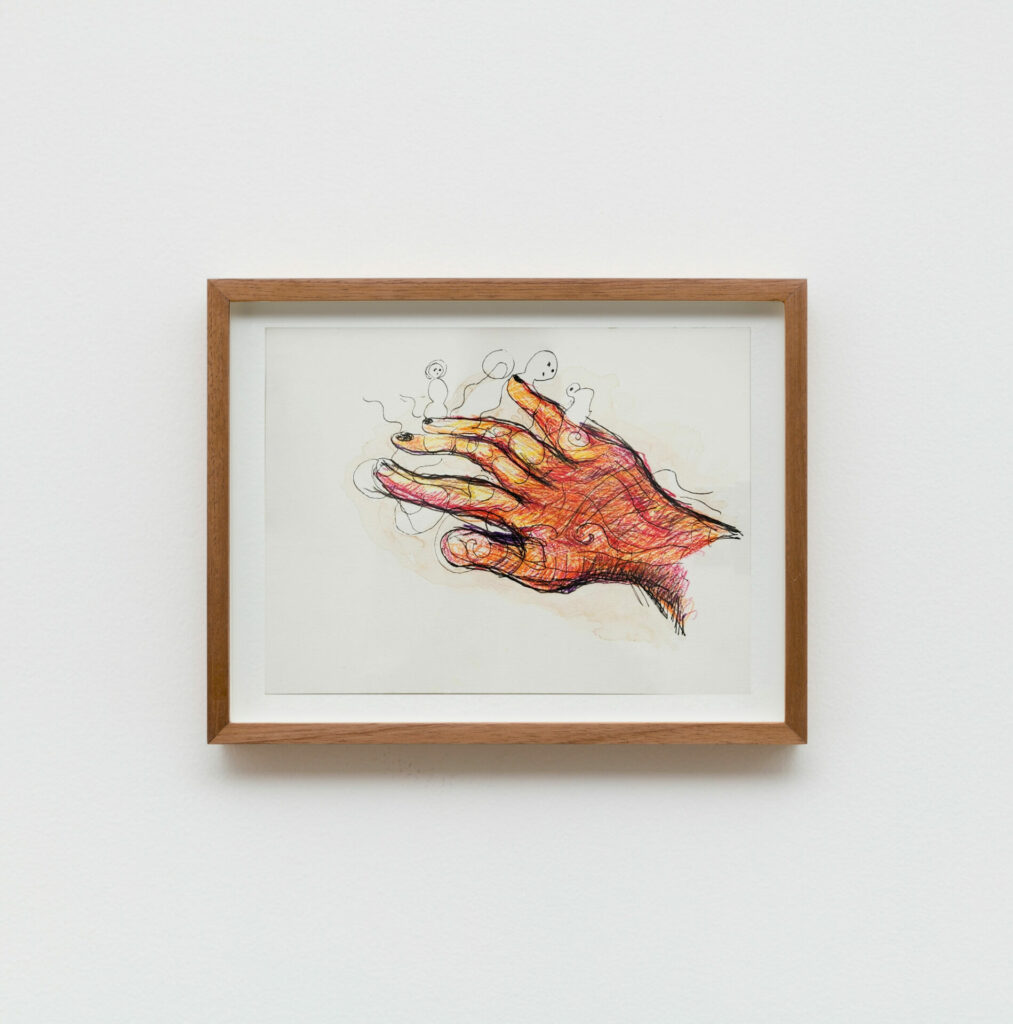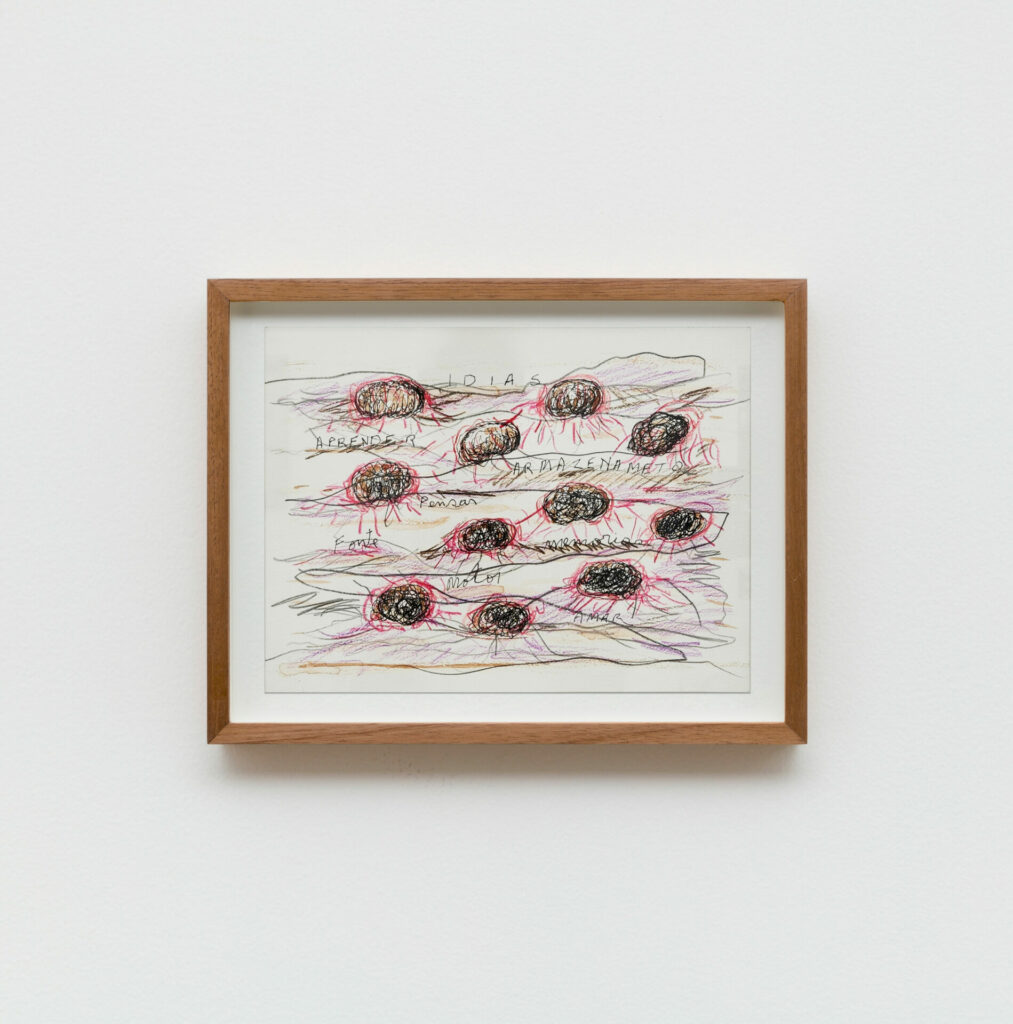Luiz Hermano Façanha Farias studied philosophy in Fortaleza in the early 1970s and since then he has always drawn. In the beginning, without access to professional paint sets, he painted with coffee. In 1979, he attended engraving lessons at Escola de Artes Visuais do Parque Lage in Rio de Janeiro. In the same year, he moved to São Paulo and by invitation of Pietro Maria Bardi, held the “Desenhos” exhibition at the Art Museum of São Paulo Assis Chateaubriand (MASP). In 1980, he published the intaglio prints album entitled “O Universo.” In 1984, upon receiving the Chandon Prize, he traveled to Paris, where he conducted a solo exhibition at Debret gallery. Hermano participated in the 5th International Biennial of Seoul (1983) and the 2nd Pan-American Biennial of Havana (1986). In the 1980s, he dedicated himself mainly to painting. In the 90s, he developed three-dimensional artworks using various materials such as natural gourds, copper wire, wire, electronic capacitors, brass alloys, aluminum, acrylic parts and various types of industrial pieces, displaced from everyday life. In 1987, he exhibited his paintings at the 19th International Biennial of Sao Paulo and sculptures at the 21st edition of the event in 1991. In 2005, he participated in the exhibition “Discover Brazil” at the Ludwig Museum in Koblenz, Germany. In 2008, he held the “Templo do Corpo” exhibition at Pinacoteca do Estado de São Paulo, publishing on this occasion the book “Luiz Hermano.”
The monumentality in the work of Luiz Hermano is present in many public spaces. In São Paulo, at Museu de Arte Contemporânea da USP’s gardens, in the subway at República station, at the Museum of Modern Art of São Paulo´s gardens, and in Recife, Pernambuco, the piece Mandacaru, measuring 7 meters, is exposed at Museu Cais do Sertão.
The artist divides his time between his studio and the world, as Katia Canton writes: “trips are ways to claim territories, consecrating the artist an increasingly dense reservoir of world experiences. Landscapes, temples, stories of people and things seen on the way, everything accumulates in the thickness of a new artwork.”




